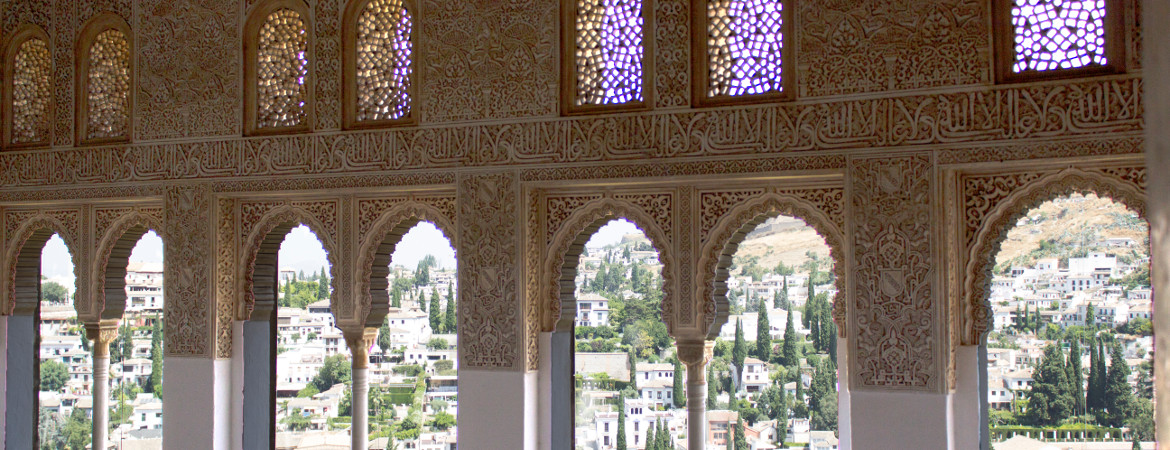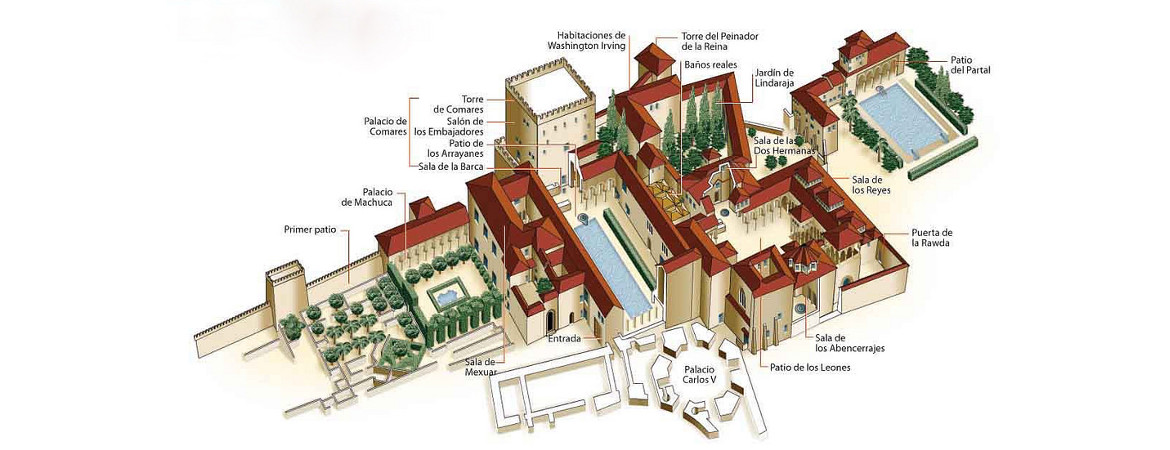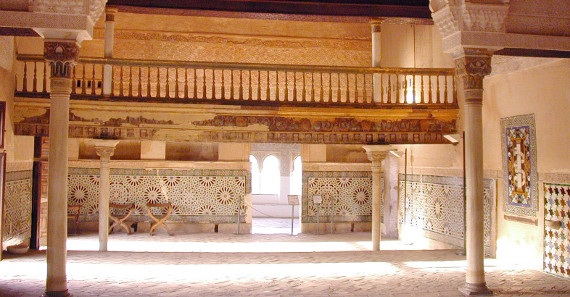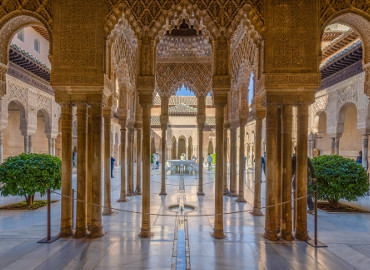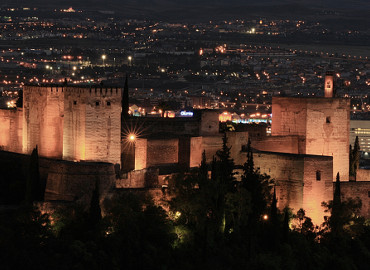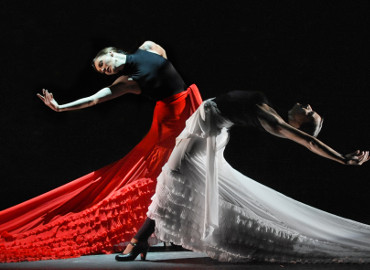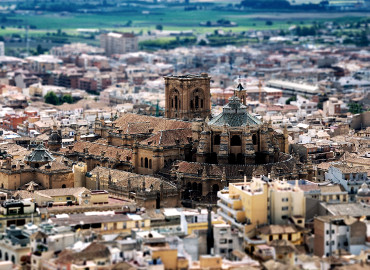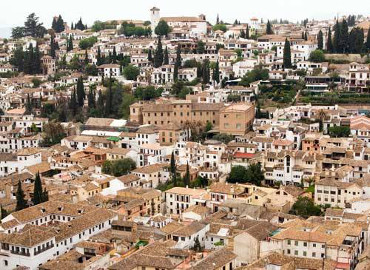The Mexuar- Oratory
Its name is derived from the Arabic term Maswar, the place where the Surah or Counsel of Ministers met. It was also the place or hall where the Sultan dispensed justice. This room probably belonged to a structure that preceded the Palace of Comares and the Palace of the Lions. Its construction is attributed to Isma’il (1314-1325), and has undergone many alterations and modifications. Its decoration was adapted by Yusuf I (1333-1354) and later by Muhammad V during his second mandate (1362-1391). Both rulers were responsible for the construction of two best preserved Palaces of the Alhambra.
The Nasrid Palace
Originally it had a lantern-like central body that provide light to the inside, of which only the four columns and entablature have been preserved. In the 16th century an upper floor was added and the building was transformed into a Chapel. The area today, with its Renaissance balustrade, was originally enclosed by a wall that was connected to the courtyard; this was added to the room to be used as the chapel choir. Among the many significant alterations to the room was the epigraphic frieze of stucco that runs above the tiled socle . Coming from the lost Portico of the Court of Machuca, it was installed in the Mexuar by Moorish artisans to replace battlements with a clear symbolic purpose: The Kingdom is God’s, Power is God’s. Glory is God’s”. This inscription replaced the Christian verse: «Christus regnat. Christus vincit. Christus imperat».
Book your tickets online for The Alhambra!




